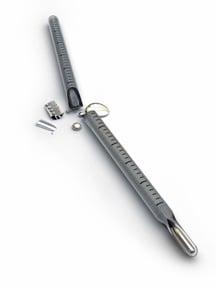Mercury is a common element found in the lab, particularly in thermometers, barometers, manometers and sphygmomanometers. Given the danger of mercury, many of these instruments are being phased out in place of more environmental- and health-friendly options. As far back as 1991, the Environmental Protection Agency regulated mercury out of latex paint, and in other industries such as pharmaceutical and agricultural, it is being used less and less.
There are three forms of mercury inorganic, organic and elemental mercury, which is most common in the lab. Each is toxic, but organic mercury, which forms in nature, contaminates fish and pollutes waters. Elemental mercury is a silvery and odorless liquid at room temperature, and is the most common source of occupational exposure. The vapors from a spill can “affects the central nervous system (CNS), producing tremors, mood changes and reduced cognitive, sensory, and motor nerve functions. The kidneys are also affected, with renal failure at extremely high doses.”[i]
Read More










